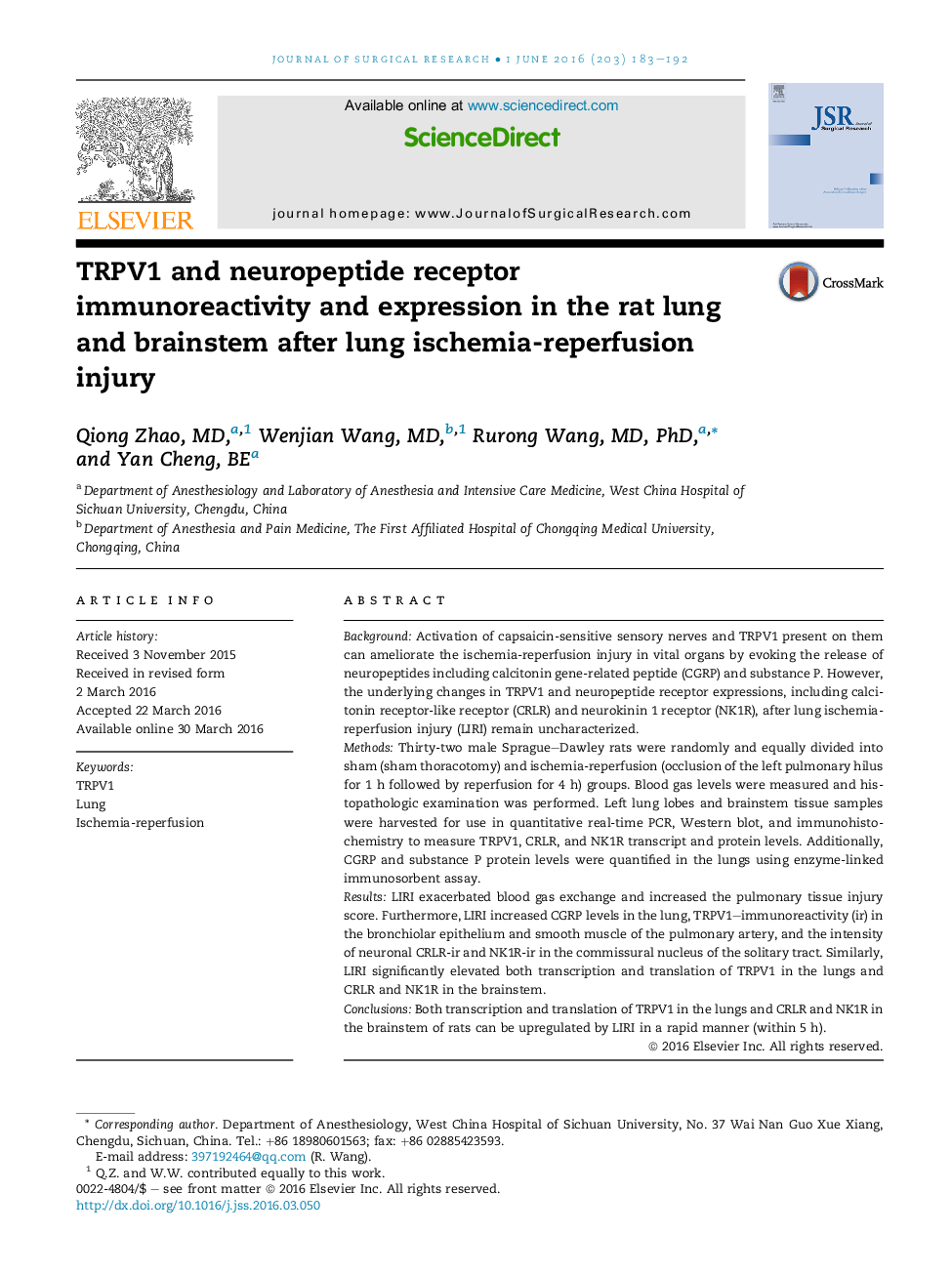| Article ID | Journal | Published Year | Pages | File Type |
|---|---|---|---|---|
| 4299212 | Journal of Surgical Research | 2016 | 10 Pages |
BackgroundActivation of capsaicin-sensitive sensory nerves and TRPV1 present on them can ameliorate the ischemia-reperfusion injury in vital organs by evoking the release of neuropeptides including calcitonin gene-related peptide (CGRP) and substance P. However, the underlying changes in TRPV1 and neuropeptide receptor expressions, including calcitonin receptor-like receptor (CRLR) and neurokinin 1 receptor (NK1R), after lung ischemia-reperfusion injury (LIRI) remain uncharacterized.MethodsThirty-two male Sprague–Dawley rats were randomly and equally divided into sham (sham thoracotomy) and ischemia-reperfusion (occlusion of the left pulmonary hilus for 1 h followed by reperfusion for 4 h) groups. Blood gas levels were measured and histopathologic examination was performed. Left lung lobes and brainstem tissue samples were harvested for use in quantitative real-time PCR, Western blot, and immunohistochemistry to measure TRPV1, CRLR, and NK1R transcript and protein levels. Additionally, CGRP and substance P protein levels were quantified in the lungs using enzyme-linked immunosorbent assay.ResultsLIRI exacerbated blood gas exchange and increased the pulmonary tissue injury score. Furthermore, LIRI increased CGRP levels in the lung, TRPV1–immunoreactivity (ir) in the bronchiolar epithelium and smooth muscle of the pulmonary artery, and the intensity of neuronal CRLR-ir and NK1R-ir in the commissural nucleus of the solitary tract. Similarly, LIRI significantly elevated both transcription and translation of TRPV1 in the lungs and CRLR and NK1R in the brainstem.ConclusionsBoth transcription and translation of TRPV1 in the lungs and CRLR and NK1R in the brainstem of rats can be upregulated by LIRI in a rapid manner (within 5 h).
